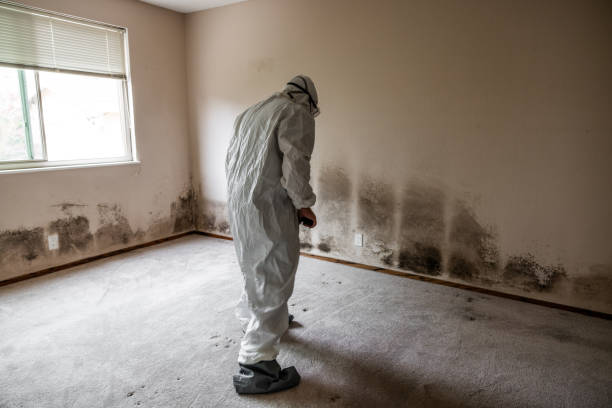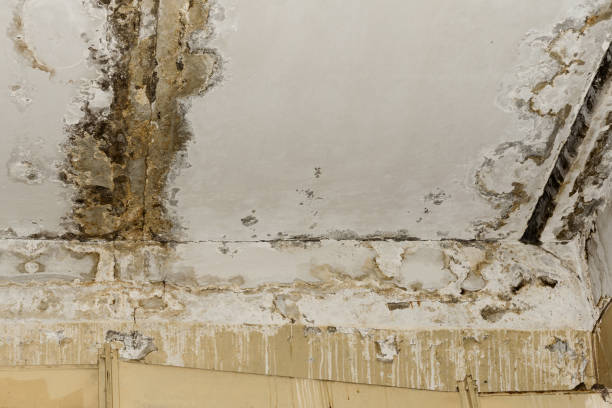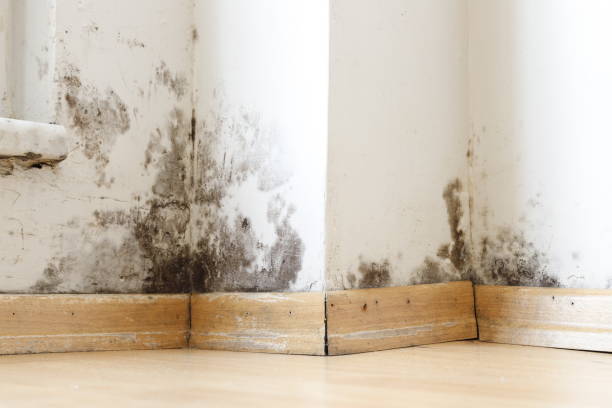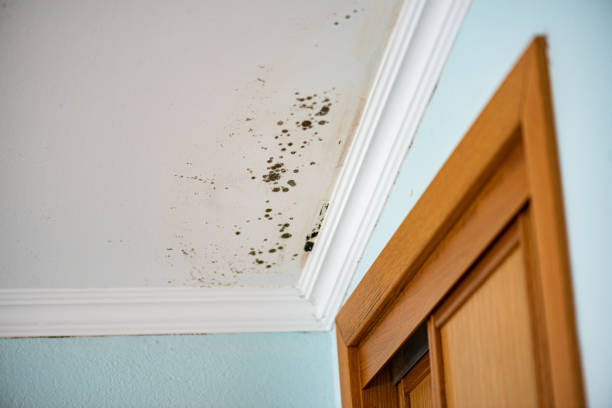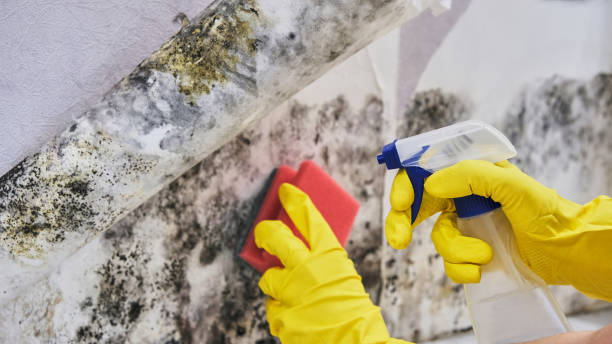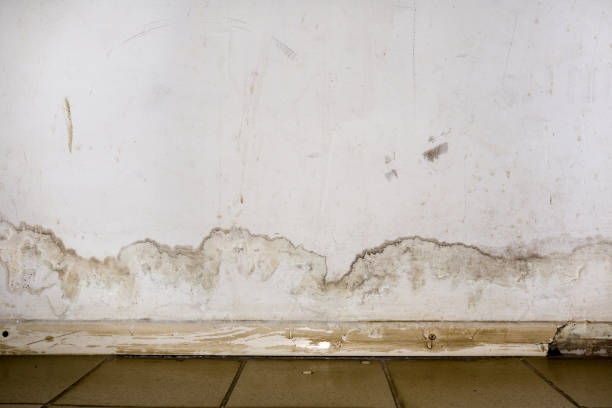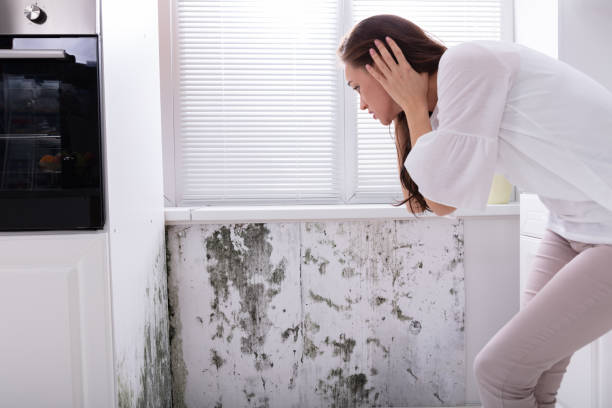
Mold is a pervasive issue that can significantly impact the health and structural integrity of your home. Understanding its causes, behaviors, and how to manage it is essential for ensuring a safe and healthy living environment.
What Causes Mold Growth?
Mold thrives in environments where moisture, warmth, and organic materials are present.
- Leaks:Plumbing leaks, roof leaks, or window condensation can create damp areas ideal for mold growth.
- Poor Ventilation:Poor air circulation in basements, attics, or bathrooms leads to increased humidity levels.
- Flooding:Water damage from flooding can leave behind wet materials that promote mold development.
- High Humidity Levels:Areas with consistent indoor humidity above 60% are particularly vulnerable.
Where Mold Is Likely to Grow
Certain areas in the home are more prone to mold due to their environmental conditions.
- Bathrooms (due to steam and inadequate ventilation)
- Basements (often damp and poorly ventilated)
- Kitchens (near sinks or under appliances like dishwashers)
- Attics (due to roof leaks or poor insulation)
- HVAC systems (if condensation accumulates within ducts)
Why Is Mold Dangerous?
- Can trigger allergies or asthma symptoms.
- Prolonged exposure may cause respiratory issues or skin irritation.
- Certain molds (like black mold) may produce mycotoxins that affect neurological function.
- Mold feeds on organic materials such as wood, drywall, and insulation.
- Over time, this can weaken the structure of your home.
- Visible mold issues can deter potential buyers.
- Unaddressed damage may result in costly repairs during resale.
How to Prevent Mold Growth
Prevention is always better than remediation when it comes to mold.
- Use dehumidifiers in humid areas.
- Keep indoor humidity between 30%–50%.
- Install exhaust fans in bathrooms and kitchens.
- Open windows regularly to improve airflow.
- Repair plumbing leaks immediately.
- Ensure gutters direct water away from your foundation.
- Wipe down surfaces prone to condensation regularly.
- Don’t leave wet clothes or towels lying around.
- Check basements, attics, crawl spaces, and HVAC systems periodically for signs of moisture or visible mold.
Addressing Existing Mold Problems
If you’ve identified mold growth in your home, it’s important not to delay addressing it.
| Level of Contamination | Appropriate Action |
| Small Area (<10 square feet) | Clean the area using soap and water followed by a disinfectant like diluted bleach (1 cup per gallon). |
| Moderate Area (>10 square feet) | Consult a professional for assessment as larger areas may require specialized tools/approaches. |
| Widespread Mold | Engage licensed remediation experts who follow industry standards such as those set by the EPA or IICRC. |
By understanding how mold operates inside your home and taking proactive steps toward prevention and remediation when needed, you can protect your living space from its harmful effects while safeguarding your family’s well-being.
Understanding Mold Remediation Florida: Types of Indoor Mold and Their Effects on Your Home
Mold is a common household issue that can significantly impact your living environment and overall health. Understanding the different types of mold that commonly grow indoors is essential for identifying potential risks and addressing the problem effectively.
Stachybotrys, often referred to as black mold, is one of the most infamous types due to its association with health problems.
– Wood
– Drywall
– Paper products
Impact:
Black mold can release mycotoxins, which may cause respiratory issues, skin irritation, headaches, and fatigue. It poses a particular threat to individuals with weakened immune systems or pre-existing respiratory conditions like asthma.
Aspergillus is a common indoor mold found in dust, air conditioning systems, walls, and insulation. There are many species of Aspergillus, some of which produce harmful toxins.
Impact:
Exposure can lead to allergic reactions such as coughing or sneezing. In severe cases, it may cause infections in immunocompromised individuals through a condition called aspergillosis.
Cladosporium is unique because it can grow in both warm and cold climates. It’s often found on carpets, curtains, wood surfaces, and HVAC systems.
Impact:
While not usually toxic, this mold type can trigger asthma symptoms or allergic reactions like watery eyes or a runny nose.
Penicillium thrives in water-damaged areas and spreads quickly via airborne spores.
Impact:
This type of mold can lead to sinus infections or lung inflammation if inhaled over time.
| Type | Common Locations | Potential Health Impact |
| Stachybotrys | Wood surfaces; drywall | Respiratory issues; fatigue; immune system risks |
| Aspergillus | Dust; HVAC systems | Allergic reactions; potential fungal infections |
| Cladosporium | Carpets; curtains | Asthma flare-ups; mild allergies |
| Penicillium | Water-damaged materials | Sinus irritation; lung inflammation |
Understanding How a Florida Mold Removal Company Florida Can Improve Your Living Environment
- Structural Damage:Mold breaks down organic materials such as wood or drywall over time.
- Odors:Musty odors from molds like Penicillium or Cladosporium are difficult to eliminate without proper remediation.
- Aesthetic Damage:Visible stains from certain molds may permanently damage walls or ceilings if left untreated.
Preventive measures such as maintaining proper ventilation levels and monitoring humidity can help mitigate these risks effectively while maintaining a healthier living space long-term.
Understanding the Importance of Mold Inspection Florida: Common Indoor Molds and Their Effects
Mold growth indoors can negatively affect both the structural integrity of your home and the health of its occupants. Understanding the most common types of mold found inside houses and their potential impact helps you respond effectively to potential infestations. Below is an overview of the common varieties, their characteristics, and how they might influence your living environment.
Stachybotrys (Black Mold)
Stachybotrys, often referred to as black mold, is one of the most infamous indoor molds due to its association with serious health risks.
Characteristics:
– Appears as a dark green or black slimy substance. – Requires consistent moisture to thrive (e. g. , areas with water damage or flooding).
Impact on Environment:
– Deteriorates wood, drywall, and other porous materials over time. – Produces mycotoxins that can lead to respiratory issues, headaches, fatigue, and even neurological symptoms in sensitive individuals.
Common Locations:
– Basements
– Bathrooms with poor ventilation
– Areas affected by leaks or humidity buildup
Aspergillus
This mold species is one of the most widespread types found indoors due to its ability to grow on a variety of surfaces.
Characteristics:
– Comes in numerous colors such as yellow, green, or brown depending on its specific strain. – Typically grows in areas where dust accumulates or organic material is present (like fabrics).
Impact on Environment:
– Can release allergens that exacerbate asthma symptoms.
– Some strains produce aflatoxins, which are harmful compounds linked to health concerns when inhaled over time.
Common Locations:
– HVAC systems (ductwork specifically)
– Curtains or carpets exposed to humidity
– Stored food items
Cladosporium
Cladosporium grows in both warm and cool climates and is commonly encountered indoors.
Characteristics:
– Often appears as black or olive-green spots with a soft texture. – Non-toxic but highly allergenic for certain individuals.
Impact on Environment:
While it may not produce toxins like Stachybotrys, Cladosporium has significant effects:
– Increases indoor allergens leading to sneezing fits or other minor irritations among residents sensitive/allergic reactions occurring frequently over extended exposure periods themselves adding further discomfort overall potentially reducing quality life scenarios related housing itself inadvertently caused too many sources unchecked growing outright requiring immediate intervention tactful response accordingly manageable tracks preventively
Step-by-Step Guide to Mold Testing Florida and Effective Remediation Techniques
Below is an in-depth guide that details each step involved in effective mold remediation.
The first step in the mold remediation process is identifying the scope of the issue.
What happens during this phase?– Visual inspection for visible signs of mold – Air sampling to assess spore levels – Moisture mapping to detect areas prone to growth – Identification of the mold type (e. g.
Once identified, containment is critical to prevent the spread of spores during the removal process. Professionals isolate affected areas by creating physical barriers using materials such as plastic sheeting and negative air pressure systems.
Containment techniques include: – Sealing windows and doors with polyethylene sheeting – Employing HEPA-filtered negative air machines – Restricting movement in contaminated zones
Step 3: Air Filtration
To minimize airborne spores that can settle elsewhere in your home, air filtration systems are deployed. This step ensures that indoor air quality remains safe throughout the remediation process.
Common tools used for air purification: – HEPA (High-Efficiency Particulate Air) filters – Air scrubbers designed for capturing microscopic spores – Dehumidifiers to reduce excess moisture levels
| Tool | Purpose |
| HEPA Filters | Captures tiny airborne spores |
| Air Scrubbers | Purifies contaminated indoor air |
| Dehumidifiers | Reduces humidity levels |
Step 4: Removal of Mold and Affected Materials
After containment and filtration, professionals proceed with removing visible mold growth as well as any building materials that cannot be salvaged due to extensive contamination.
Steps involved in removal include: – Cleaning surfaces with antimicrobial agents – Removing porous materials like drywall or carpeting if necessary – Vacuuming with HEPA vacuums for non-washable surfaces
Non-salvageable materials are safely disposed of according to environmental guidelines.
Step 5: Cleaning and Sanitization
Following removal, all remaining surfaces must be cleaned thoroughly. This step eliminates residual particles and prevents future outbreaks.
Sanitization efforts may involve:Application of EPA-approved fungicides or antimicrobial sprays. Wiping down walls, floors, and furniture with specialized cleaning agents. 3. Steam cleaning or fogging equipment for hard-to-reach spaces.
Step 6: Repairs and Restoration
Finally, any structural damage caused by mold or its removal will need repair. Replacing drywall, repainting walls, or even reconstructing sections may be necessary depending on the severity of damage.
Key restoration tasks include: – Installing new insulation if old materials were removed – Repairing water leaks or damaged plumbing – Repainting with anti-mold paint
By following these steps systematically, homeowners can ensure long-term protection against recurring outbreaks while improving overall indoor air quality.
When is Mold Remediation Required?
Mold can be a persistent and dangerous problem in any home, but identifying its presence early and understanding when remediation is required can prevent serious health risks and structural damage. Below are key signs that indicate mold remediation may be necessary, along with actionable steps to address the issue.
Signs That Mold Remediation May Be Necessary
- A persistent musty or earthy smell can often signal hidden mold growth behind walls or under flooring.
- Even if you cannot see visible mold, strong odors warrant further investigation.
- Leaks from roofs, pipes, or appliances create a perfect breeding ground for mold spores to thrive.
- Warped walls or bubbling paint may also indicate underlying dampness.
- Chronic respiratory issues such as coughing, sneezing, runny nose, or throat irritation could suggest prolonged exposure to mold.
- People with allergies or asthma may experience worsening symptoms when exposed to mold spores.
- Yellowish stains on drywall or ceilings often accompany water intrusion and may signal potential mold growth.
- Consistently high humidity (above 60%) creates an environment conducive to mold growth.
Steps for Taking Action When Mold Is Found
- Assess the Scope of the Problem
For extensive contamination (areas larger than 10 square feet), consulting professionals is recommended. - Stop the Source of Moisture
Identifying and addressing sources of water intrusion—such as leaks or poor ventilation—is critical before beginning remediation efforts. - Consult Professionals for Mold Testing (if needed)
While small patches of visible mold can often be handled safely by homeowners following proper guidelines, hidden contamination may necessitate professional testing to confirm its extent. - Hire Certified Mold Remediation Specialists
Professional services ensure effective removal while minimizing risks associated with air-borne spore dispersal during treatment processes.
Preventing Future Mold Problems
- Maintain indoor humidity levels between 30%-50% using dehumidifiers if necessary.
- Fix any leaks promptly and ventilate damp areas such as bathrooms regularly.
- Clean gutters frequently to prevent water accumulation near your home’s foundation.
- Regularly inspect areas prone to moisture build-up like basements and crawl spaces.
| Problematic Area | Common Causes | Preventative Measure |
| Bathrooms | Poor ventilation | Install exhaust fans; use squeegees |
| Kitchens | Leaking pipes/appliances | Check plumbing connections monthly |
| Basements & Crawl Spaces | High humidity; groundwater seepage | Use dehumidifiers; seal cracks |
By staying vigilant about these warning signs and taking timely action when necessary, you can protect both your home’s structural integrity and your family’s health from the harmful effects of indoor mold growth.
- Understanding Mold Removal Florida: The Process and What It Involves
- Effective Mold Removal Florida: Protecting Your Home from Hidden Threats
- Choosing the Best Florida Mold Removal Company Florida: What You Need to Know
- Health Risks of Using Bleach for Mold Removal Florida Homes
- Mold Remediation Florida: Expert Services to Restore Your Home
- Effective Strategies for Mold Remediation in Florida
- Understanding Mold Remediation in Florida and How It Spreads in Homes
